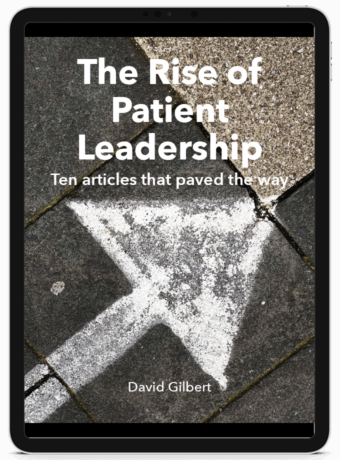No More Eddies: Hitting the Suicide Target and Missing the Point?
Warning: This article is about suicide and mentions people who have committed suicide and therefore may be triggering
Please note: All names have been changed, apart from that of Nick Clegg!
___
Just Checking…
One afternoon, many years ago, I was sitting on my bed in the psychiatric unit. There was nothing to do, lunch had been horrible, and I wasn’t well. I was lonely and did not feel safe.
One of many psychiatrists I was to meet during my wilderness years, strolled in to the six-bedded bay. He gave me a perfunctory nod, then proceeded to pull gingerly, then a little harder, at the curtain rail by my bed. His behaviour seemed odder than mine, or that of my fellow inmates, so I asked him what he was doing. He replied: ‘just checking to see whether you can do anything stupid’ and walked off.
I was left contemplating my now enhanced treatment ‘options’.
More seriously. For those who haven’t got it yet, this well-intentioned, busy man was checking to see whether I could hang myself from the rail – whether it was collapsible or non-collapsible, and thus whether it was a ligature point.
Ann, Eddie and Carl
Fast forward a few years: I was Head of Patients and the Public at the Commission for Health Improvement (CHI) – the then health inspectorate - and I was reading a report from the National Patient Safety Agency (NPSA) that outlined the measures to take in order to reduce to zero the number of in-patient suicides. The key measure was that Trusts should remove all non-collapsible curtain rails from wards and that this was to be reported to Clinical Governance Committees. CHI would check on this.
As I was reading, I thought back to my friends on the ward.
Ann had been paralysed from the neck down. She became a close friend on the ward, always encouraging others. Amongst other things, she coaxed me into playing my guitar for the first time for many months. Her kindness helped me through. She died a year later, while choking on her food while unsupervised in a residential home.
Eddie, a young gentle man, with whom I sometimes played cards, ‘absconded’ from the ward (a phrase I hate, as it makes us sound like criminals). He hanged himself in a friend's caravan.
Carl was a troubled older man who roamed the ward restlessly, cadging cigarettes. He eventually drowned himself in the local reservoir.
Then I imagined that doctor, after checking on the curtain rails. He would have been able to report that there were no non-collapsible curtain rails on the ward. This would have enabled a safety sub-committee to report to a clinical governance committee to report to a Board to report to the inspectorate that there were no suicides or deaths in the unit.
And the memory of what happened to Ann, Eddie and Carl could be wiped clean and the potential for learning lost. The system could boast that it had hit the target (by shunting people and the problem on to others). And, of course, everyone would be missing the point.
What If?
What if that doctor had paused, sat down next to me, asked me how things were going and whether there was anything that could be done to make me feel safe while I was an in-patient?
What if a team of service users, carers and staff had got together and worked on how we could make the environment safer? What if we had come up with more things to do, more outings, better food, kinder staff, etc? What if the insights and solutions generated led to Trust-wide learning and more than a ‘structural’ (pun intended) intervention?
What if we had come up with different measures for success than those that the policy wonks, managers and professional staff had foisted on all of us? What if those sorts of grassroots ideas were shared? What if ‘nothing about us without us’ was a reality rather than empty messaging? What if this were about our experiences, feelings of safety, health and well-being?
I believe – have always believed – that patient and public involvement, engagement, empowerment, co-production, co-design, co-co-co- call it whatever the hell you want…. saves lives. And might have saved Ann, Eddie and Carl.
Zero Tolerance
I heard recently that there was to be a campaign for ‘zero tolerance’ of suicides by people with mental health problems. I was immediately worried that this was a Nick Clegg election ploy. That’s a dangerous game, Mr Clegg.
I have heard also that this campaign may target staff in psychiatric hospitals. And this sent me back to reflect on my own experiences, and those damn curtain rails. I am all for raising awareness of suicide, and for ways of service users and carers working with staff to prevent suicide. I am hoping to be involved, and hoping also that the rhetoric of co-design will be matched by reality.
For me, it is not about ‘preventing suicide’. Sure, it is about saving lives, but more importantly it must focus on how to work with people with mental health difficulties in order to support them to regain meaning in their lives - to help them want to live.
More narrowly, knowing now how the NHS works, I am concerned about how a simple political message translates back to the experiences of people who use services; how a ‘zero-tolerance’ message easily becomes a ‘tick-box target’. And how it may result in using a ‘proxy’ (or poxy) measure such as collapsible curtain rails - a process measure that is not only meaningless, but ultimately unsafe.
People need kindness, safety and time. And a million other things to live with and/or recover from mental health problems. The well-meaning intentions of those creating these sorts of campaigns and policies need to be matched by user-generated insights and solutions. As the saying goes ‘there’s many a slip between cup and lip’.
We can’t afford to get this one wrong. We can’t afford to let another Eddie die.
___
If you liked this article, why not read 'Thank you Mandy et al: The small acts of kindness that helped my recovery' http://tinyurl.com/nqyn8j2


Beautifully written and very well argued. As you know, I'm lucky enough to have spoken directly with Norman Lamb and Prof Louis Appleby and the INTENTION is, I am assured, both positive and compassionate. The REALITY, as you so movingly describe, may be different. Unless those who have experience of the impact of stigma and who are in the privileged position of having a voice keep close to this issue. People like you, me and others reading this. Thank you David.
Thank you for this David. We have to ensure that its not just about hitting targets. That's one of the reasons I have problems with targets. They can be misused, and what we need is attention to helping people to have a better life, not simply avoiding their death. There is s big difference between the two.
Glad you've picked this one up David as I was worried too it might be knee jerk sound bite for electioneering. The wider point is surely about supporting people to regain their lives, recover from a bout of acute illness or learn to manage an enduring condition- as well as saving lives.
A tick box that only focuses on physical surroundings, as you illustrate, misses the point and actually what you are advocating sounds like pure common sense- talk to people, listen and respond according to what you've learned or heard.
For me there is a wider imperative to ensure that patients get a compassionate, reasoned and supportive response when and wherever they connect with a health professional. I have personal experience of feeling suicidal and using the last remnants of my energy to see a GP to ask for help. His response was sadly lacking in compassion - maybe he couldn't cope with a weeping woman?- and told me what did I expect him to do, how suicidal was I and I could always go to A&E.
Clearly I did survive that incident but only by luck and others are not so fortunate. My plea would be to go wider than the sound bites and deal with the real issues which are simple and complex in equal measure.
Absolutely excellent.